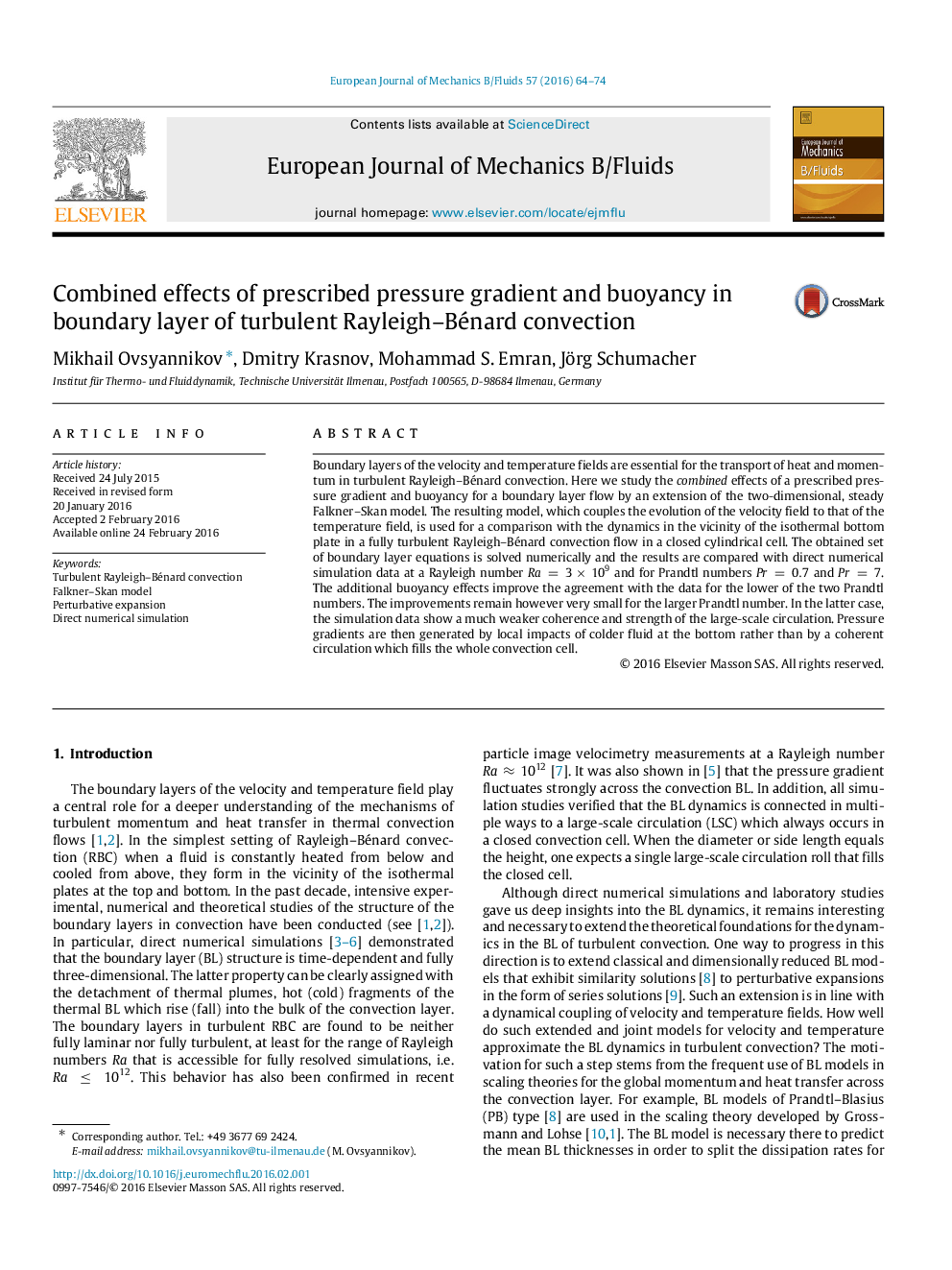| Article ID | Journal | Published Year | Pages | File Type |
|---|---|---|---|---|
| 650228 | European Journal of Mechanics - B/Fluids | 2016 | 11 Pages |
Boundary layers of the velocity and temperature fields are essential for the transport of heat and momentum in turbulent Rayleigh–Bénard convection. Here we study the combined effects of a prescribed pressure gradient and buoyancy for a boundary layer flow by an extension of the two-dimensional, steady Falkner–Skan model. The resulting model, which couples the evolution of the velocity field to that of the temperature field, is used for a comparison with the dynamics in the vicinity of the isothermal bottom plate in a fully turbulent Rayleigh–Bénard convection flow in a closed cylindrical cell. The obtained set of boundary layer equations is solved numerically and the results are compared with direct numerical simulation data at a Rayleigh number Ra=3×109Ra=3×109 and for Prandtl numbers Pr=0.7Pr=0.7 and Pr=7Pr=7. The additional buoyancy effects improve the agreement with the data for the lower of the two Prandtl numbers. The improvements remain however very small for the larger Prandtl number. In the latter case, the simulation data show a much weaker coherence and strength of the large-scale circulation. Pressure gradients are then generated by local impacts of colder fluid at the bottom rather than by a coherent circulation which fills the whole convection cell.
